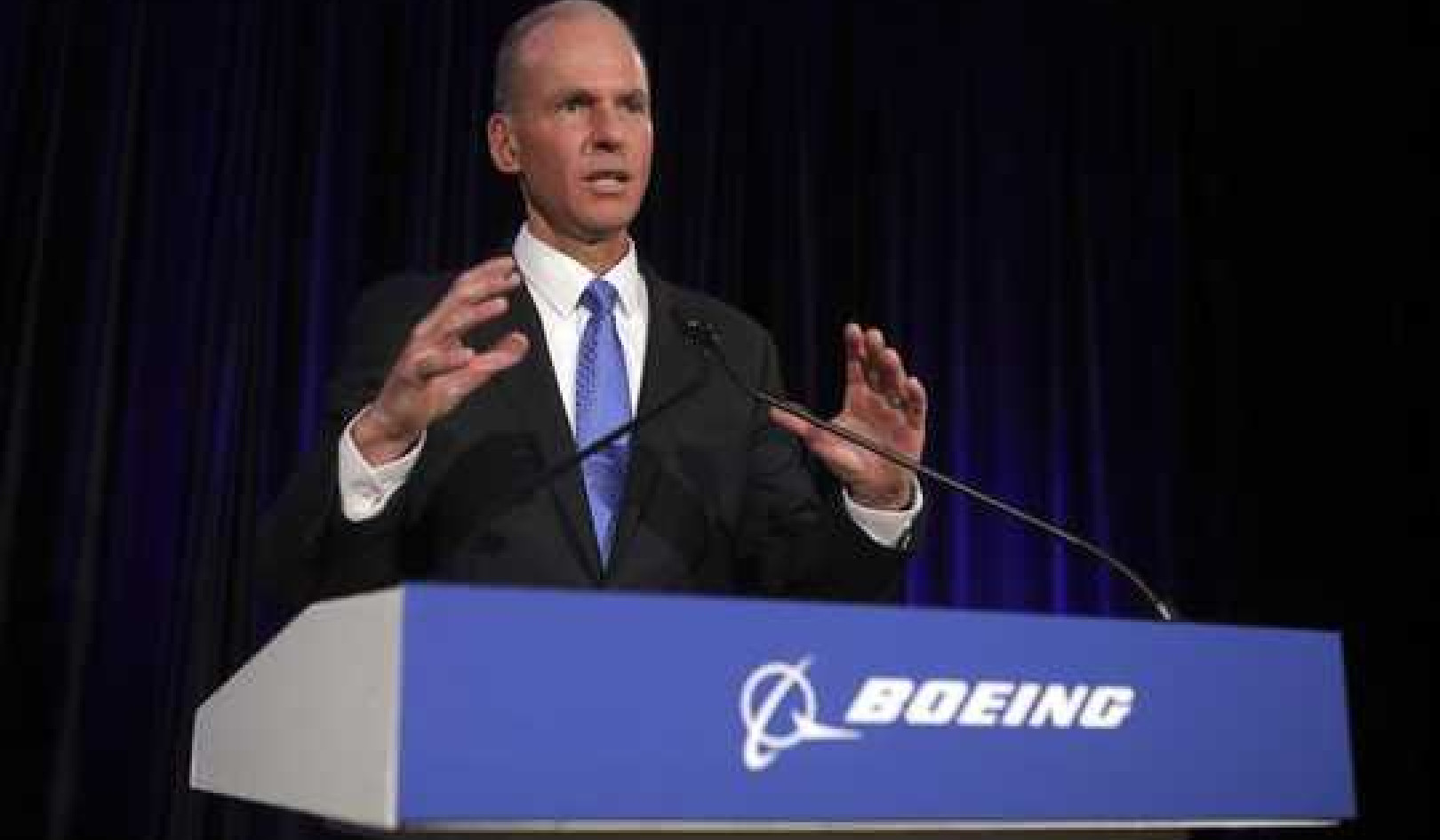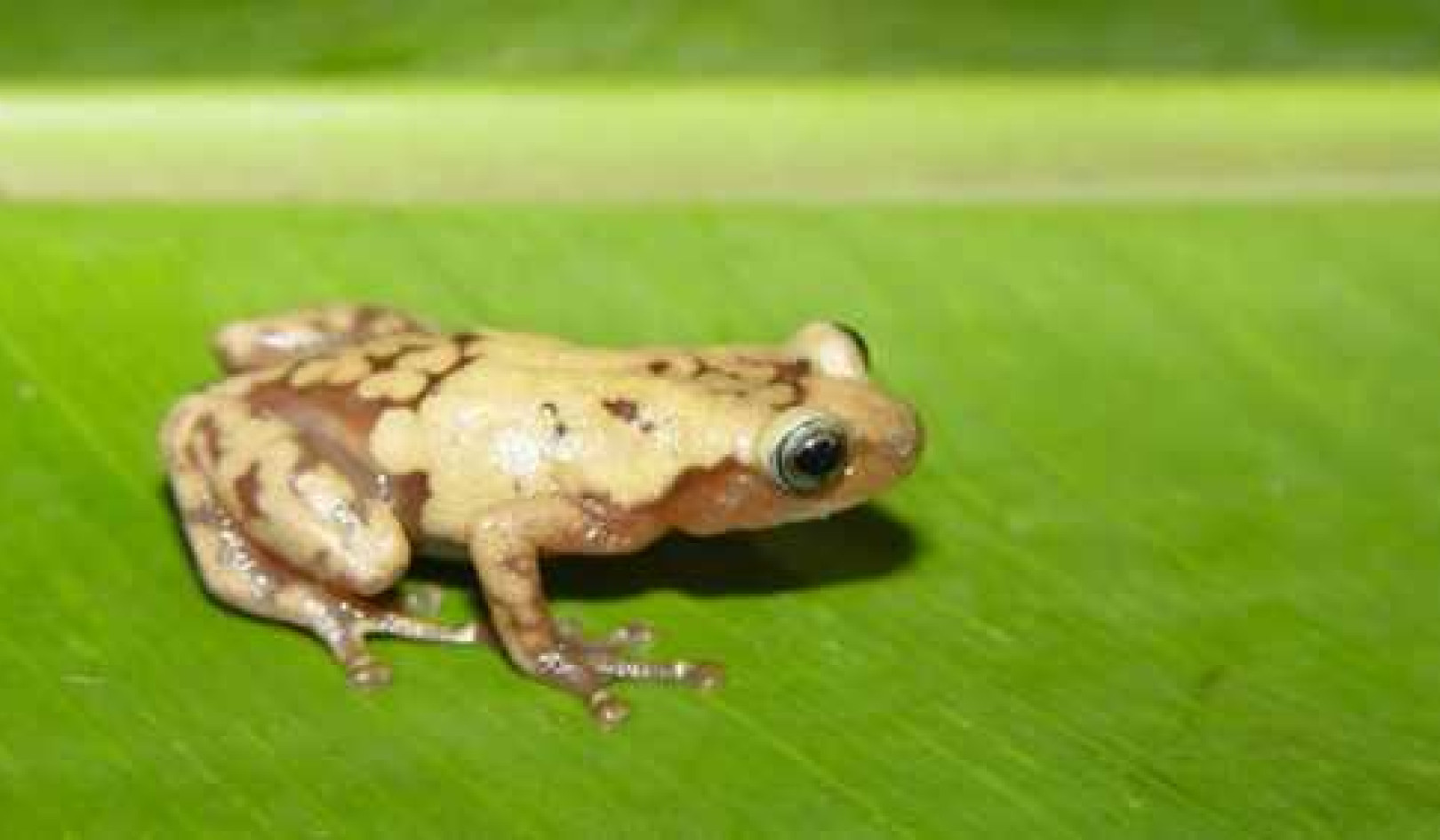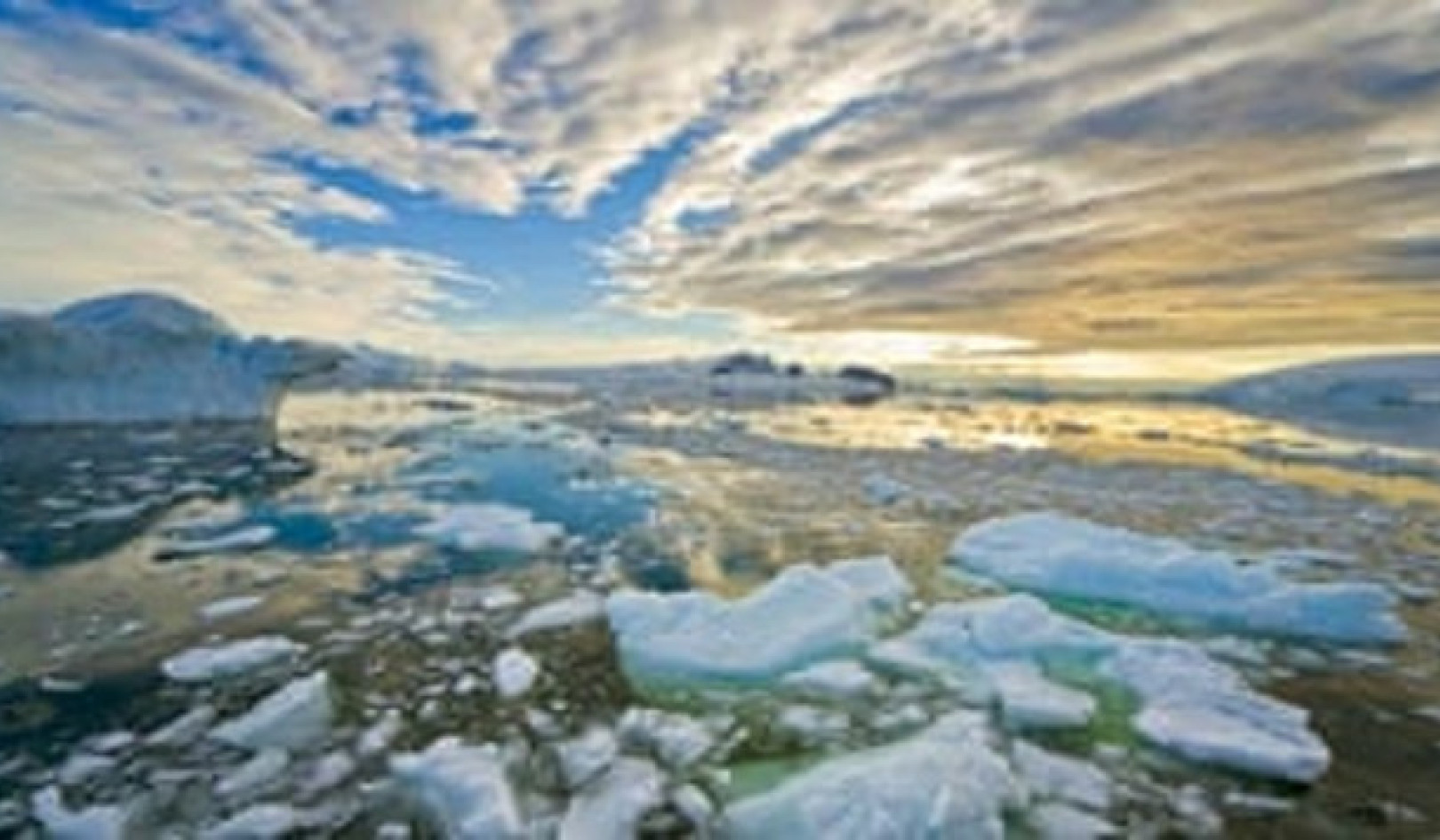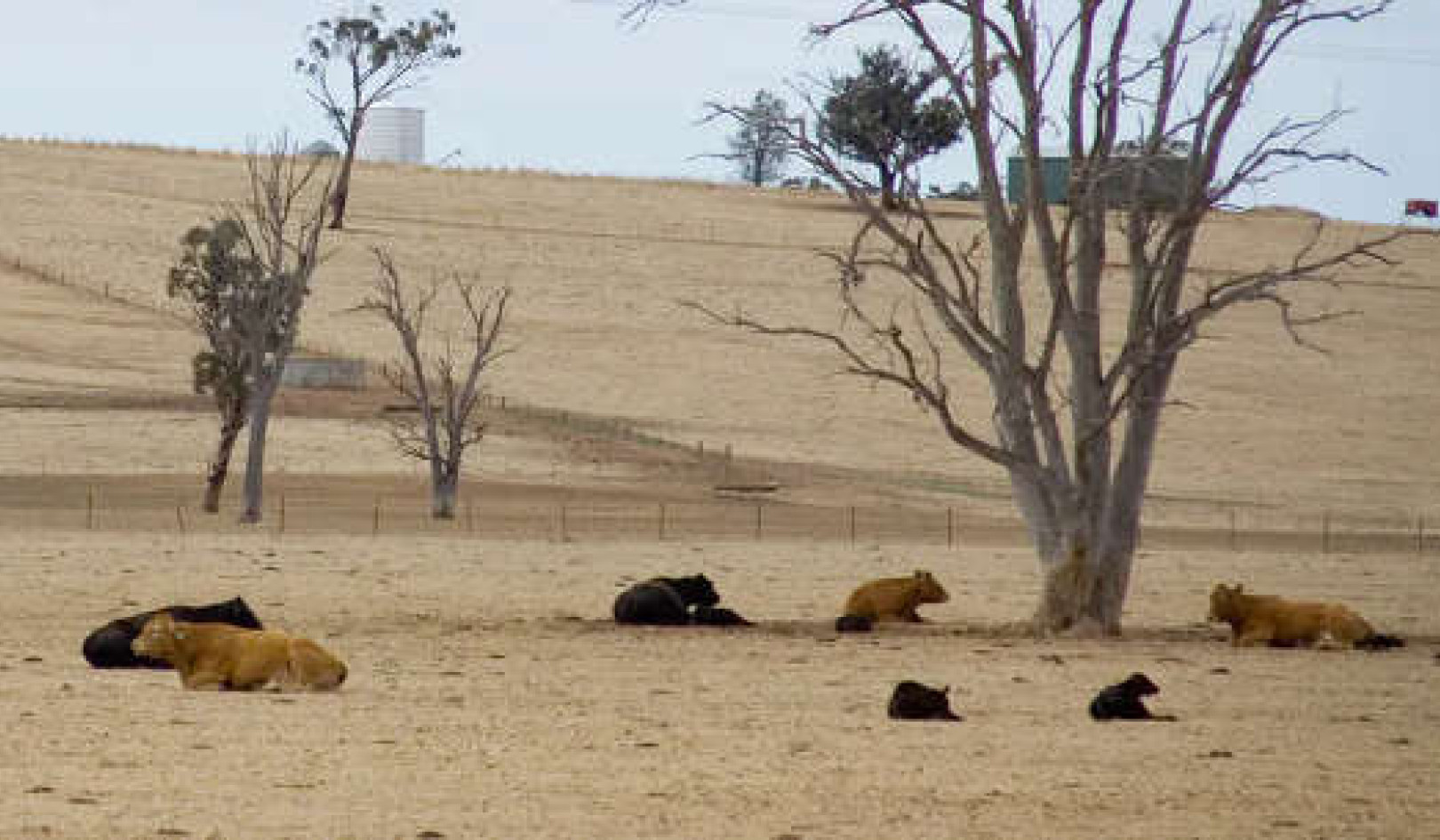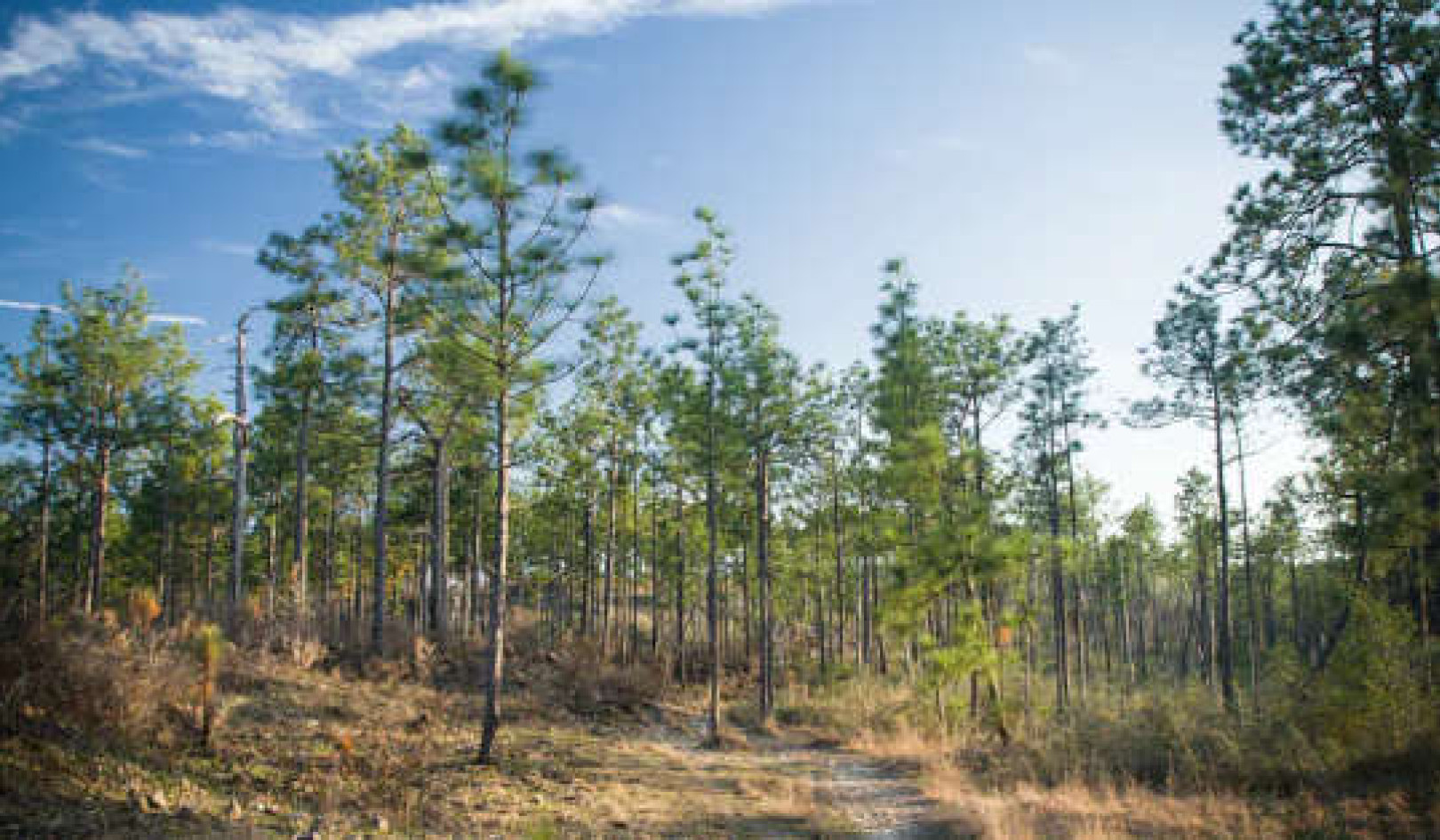
Perth has long had many fine parks but is losing vegetation cover in a band of increasingly dense development across the city. Ruben Schade/flickr, CC BY-NC
Governments at all levels invest a lot in greening Australian suburbs. Yet, in a recent report, we show that the greening efforts of most of our metropolitan local governments are actually going backwards.
This is a puzzle, as greening has clear environmental and economic benefits. The environmental benefits are obvious and relatively easy to count. For private home owners, numerous studies have linked greening to a range of economic benefits from energy savings to higher house prices.
So how do we explain the loss of green cover?
How we tracked the changes
Our research aimed to assess urban greening efforts and what accounts for the gains and losses.
Based on i-Tree, a well-known method for sampling urban vegetation distributions and associated land covers, we compared 2016-17 figures with an early assessment that ranged from 2008 to 2013 to examine changes in vegetation cover by local government area.
The report shows that large variation exists nationally in the growth and loss of tree canopy. Losses and gains can often be explained, however, by the changing nature of urban vegetation as neighbourhoods are transformed over time.
For example, in the graph highlighting the extent of tree canopy cover change for metropolitan local governments, Glenorchy in Tasmania shows the greatest tree canopy loss between 2008 and 2015 (more than 15 percentage points). Yet a gain in shrub area of more than 12% largely offset this canopy loss.
Similarly, Armadale in Western Australia gained more than 12% of tree canopy cover between 2011 and 2015 but lost more than 15% of shrub cover.

Loss of canopy from 2008-2013 to 2016 for all 139 metropolitan local government areas. (To see more detail in the report itself, click on the title.) Where should all the trees go?
Metropolitan local governments in Australia are very diverse in size and land use. The largest in our study, Cairns Regional Council in Queensland, is 1,500 times the area of the smallest, Peppermint Grove in inner-city Perth.
Some local government areas are dominated by non-urban land uses. This means natural processes such as bushfires, drought and forest regrowth are going to significantly affect greening efforts. Others are going to be affected by urban densification and housing growth.
Understanding greening efforts as a function of canopy loss alone is problematic for some local governments. Instead, a more appropriate measure may be the total change in urban greenery (canopy, shrubs and turf) between the two study periods. These results show that 54 out of the 139 local governments (39%) studied had suffered statistically significant losses in total green space.
Added up across Australia’s major metropolitan regions, this amounts to vegetation loss of 2.6% in our urban environments. This doesn’t like sound much, but it is equivalent to 1,586 square kilometres – a larger area than the City of Brisbane.
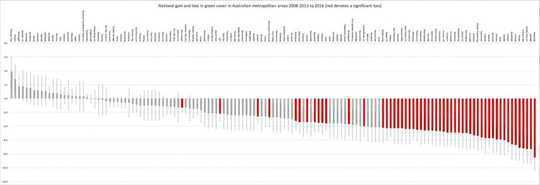
Loss of total green space (canopy, shrubs and turf) from all 139 metropolitan local government areas. Red indicates a statistically significant loss to 95% certainty. (To see more detail in the report itself, click on the title.) Where should all the trees go?
What explains this decline?

New developments across Perth show densification in selected locations. WA Land Information Authority (2016)/Alex Saunders (2017)
The location of many of the local government areas suffering more than 5% loss in green space provides clues to the types of processes driving this loss. For example, Newcastle in New South Wales lost 8.5% of its green space during our study period largely due to losses in grass cover as a result of greenfield development.
Yet, in inner-city Ashfield, the infill development of once-vegetated lands continues apace, with grass-to-hard-surface conversions accounting for most of its 7.3% loss of green space.
In some cases, local government areas are undergoing losses in a similar location. For example, the areas with the greatest losses in green space across Perth lie in a band that stretches from inland Melville to coastal East Fremantle. In these locations, the traditional Aussie backyard is losing ground to densification and infill.
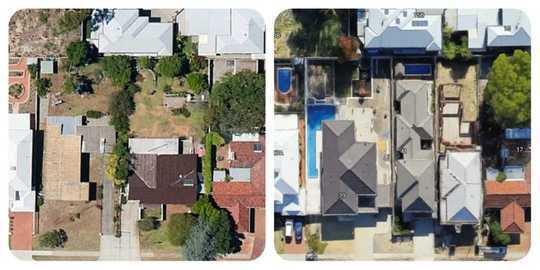
An example of changes in Melville, suburban Perth, between 2011 and 2017. Google Maps
How do our cities compare?
In recent years, interest in benchmarking exercises such as these has increased internationally. In the US in 2012, David Nowak and others examined the growth and decline in vegetation cover for 20 cities using the i-Tree methodology. US cities showed significant variability in combined tree and shrub canopy cover (54% for Atlanta to 10% in Denver).
The good news is that Greater Melbourne and Adelaide, both with 24% tree and shrub cover, perform better than the lowest values for the US cities. And Hobart’s shrub and tree cover of 57% is higher than Atlanta’s.
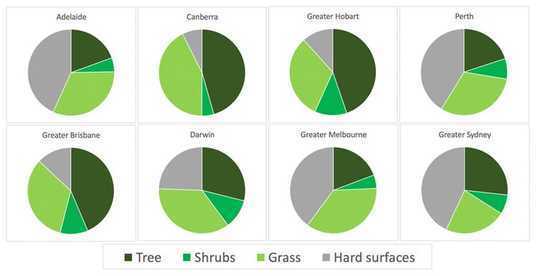
Benchmarks for land cover in Australian capital cities 2016-17. Where should all the trees go?/Marco Amati
Yet within Australian cities the variability is pronounced. Canopy covers range from 77% (Yarra Ranges, Vic) to 3% (Wyndham, Vic).
The US urban forest is also subject to natural forces like Australia’s. New Orleans lost the largest amount of canopy cover (10%) as the study period included the damage inflicted by Hurricane Katrina.

In the 1940s even cement companies were friends of the backyard. Source: The Australian Home Beautiful, October 1943
Yet, when considering the downward trend in greening, it is the historical comparison that is the most striking. The backyard was once an icon of the lifestyle enjoyed by generations of Australians growing up after the second world war.
If the downward trend in green cover continues, should the Australian backyard be red-listed as a threatened species?![]()
About the Authors
Marco Amati, Associate Professor of International Planning, Centre for Urban Research, RMIT University; Alex Saunders, GIS Specialist, Centre for the Built Environment and Health, University of Western Australia; Bryan Boruff, Senior Lecturer, School of Agriculture and Environment, University of Western Australia; Drew Devereux, Research Scientist, Data 61, CSIRO; Kath Phelan, Research Fellow, Centre for Urban Research, RMIT University, and Peter Caccetta, Research Scientist, CSIRO
This article is republished from The Conversation under a Creative Commons license. Read the original article.
Books on The Environment from Amazon's Best Sellers list
"Silent Spring"
by Rachel Carson
This classic book is a landmark in the history of environmentalism, drawing attention to the harmful effects of pesticides and their impact on the natural world. Carson's work helped to inspire the modern environmental movement and remains relevant today, as we continue to grapple with the challenges of environmental health.
Click for more info or to order
"The Uninhabitable Earth: Life After Warming"
by David Wallace-Wells
In this book, David Wallace-Wells offers a stark warning about the devastating effects of climate change and the urgent need to address this global crisis. The book draws on scientific research and real-world examples to provide a sobering look at the future we face if we fail to take action.
Click for more info or to order
"The Hidden Life of Trees: What They Feel, How They Communicate?Discoveries from A Secret World"
by Peter Wohlleben
In this book, Peter Wohlleben explores the fascinating world of trees and their role in the ecosystem. The book draws on scientific research and Wohlleben's own experiences as a forester to offer insights into the complex ways that trees interact with one another and the natural world.
Click for more info or to order
"Our House Is on Fire: Scenes of a Family and a Planet in Crisis"
by Greta Thunberg, Svante Thunberg, and Malena Ernman
In this book, climate activist Greta Thunberg and her family offer a personal account of their journey to raise awareness about the urgent need to address climate change. The book provides a powerful and moving account of the challenges we face and the need for action.
Click for more info or to order
"The Sixth Extinction: An Unnatural History"
by Elizabeth Kolbert
In this book, Elizabeth Kolbert explores the ongoing mass extinction of species caused by human activity, drawing on scientific research and real-world examples to provide a sobering look at the impact of human activity on the natural world. The book offers a compelling call to action to protect the diversity of life on Earth.




















